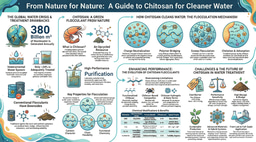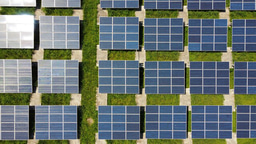A Deep Learning Journey into Eruption Analysis and Forecasting
Published in Earth & Environment, Electrical & Electronic Engineering, and Statistics

Introduction
Eruption forecasting is challenging in volcanology due to intricate volcanic processes. Swiftly analyzing large-scale seismic datasets is crucial for effective hazard mitigation. Despite progress in studying preparatory and eruptive phases, finding a reliable eruption precursor remains challenging. Volcanic tremors, which are persistent seismic signals that precede and/or accompany eruptions, can be seen as potential precursors. They play a significant role in volcano seismology as their pattern reflects the evolution of eruptive activities. However, figuring out how these tremors are exactly generated is still under question. In some eruptions, the absence of observed precursory tremors has left scientists puzzled, questioning whether it’s tied to data processing intricacies or an underlying physical mechanism. The initial reports on the 2021 Geldingadalir eruption in Iceland suggested an eruption without any precursory tremor.
Quest for Overlooked Patterns
In our quest to analyze seismic data of the 2021 Geldingadalir eruption, we’ve developed a machine learning method. This approach aims to reveal hidden patterns by using a smart neural network to automatically pick out important features from seismic waveforms. Enter Deep Embedded Clustering (DEC), a technique that optimizes feature extraction and clustering simultaneously, bringing out seismic secrets like never before. With this method, we dive into the eruptive system’s key phases by analyzing seismic signals across the eruption cycle. What’s exciting is that we can automatically distinguish unrest activities, ongoing lava extrusion, and various intensities of lava fountaining. It’s like giving the volcano a voice, and we’re finally tuning in.
Discoveries Beyond Conventional Approaches
Our deep learning model yielded two important findings:
Precursory Tremor Sequence: Our model identified a precursory volcanic tremor sequence three days before the eruption. This sequence which emerges as a potential indicator of imminent eruptive activities, may redefine our understanding of volcanic precursors.
Transition to Lava Fountaining: The model revealed that the transition from vigorous outflow to lava fountaining in early May, seen as episodic tremors in seismic data, could be linked to an increase in discharge rate in late April. This observation offers insights into the dynamics of eruptive phases.

This image reveals the eruptive activity's status, key system changes over time, and provides examples of seismic signals for each phase, aiding in understanding volcanic dynamics.
Novel Approach, Reproducible Results
Our approach isn’t data-dependent, offering a robust framework for automatic exploration of temporal evolution patterns in volcanic systems. By applying a second clustering task to episodic tremors, we delineated distinct clusters and pinpointed dates marking major shifts in the system’s states. This evolution spans an active growing state to a meta-stable period, concluding with a fully stable form featuring slow and steady effusion rates.
Implications for Hazard Mitigation
Beyond its scientific significance, our study holds practical implications for volcanic hazard mitigation. The ability to swiftly reveal temporal evolution patterns and potential precursory tremors through automated methods supports timely decision-making. This approach may stand as a crucial tool in monitoring volcanoes and response efforts.
Conclusion
Leveraging advancements in monitoring technologies and machine learning, we now possess the tools to swiftly detect the early stages of volcanic eruptions and accurately map out subsequent eruption phases with enhanced speed and precision. Additionally, there is the potential for this approach to unveil precursory tremors, further contributing to volcanic hazard mitigation efforts and aiding in timely decision-making. Future investigations can delve into the applicability of the suggested method in various volcanic settings, including real-time monitoring, to assess its benefits, constraints, and challenges.
Follow the Topic
-
Communications Earth & Environment

An open access journal from Nature Portfolio that publishes high-quality research, reviews and commentary in the Earth, environmental and planetary sciences.
Related Collections
With Collections, you can get published faster and increase your visibility.
Geology of the Moon
Publishing Model: Hybrid
Deadline: Jan 31, 2026
Drought
Publishing Model: Hybrid
Deadline: Dec 31, 2025



Please sign in or register for FREE
If you are a registered user on Research Communities by Springer Nature, please sign in